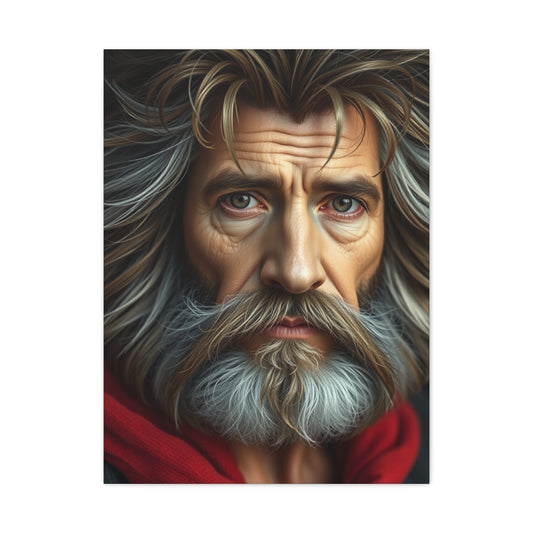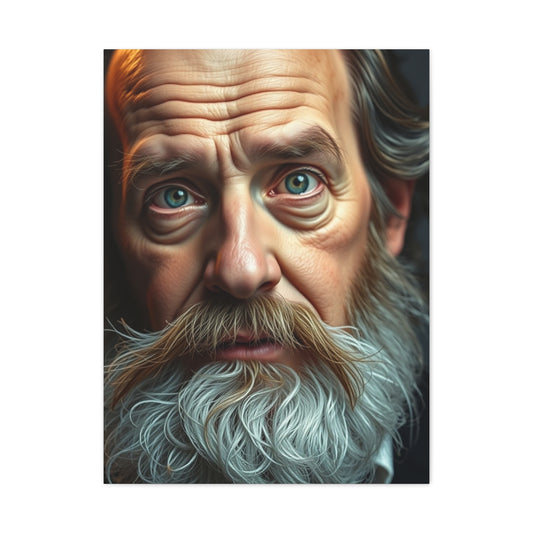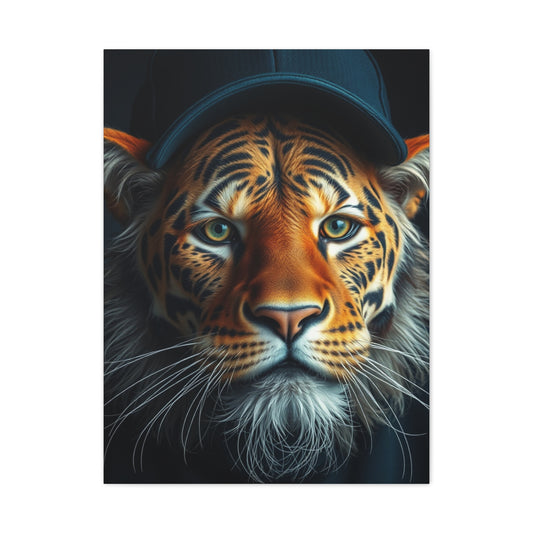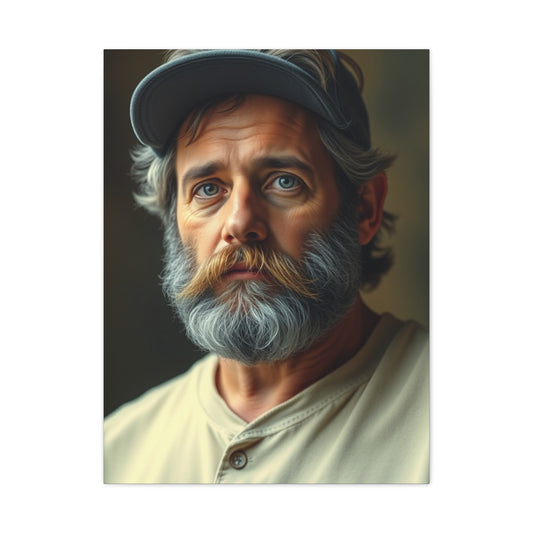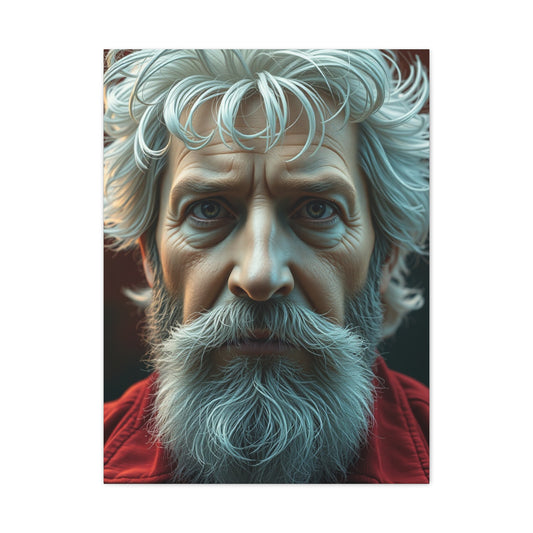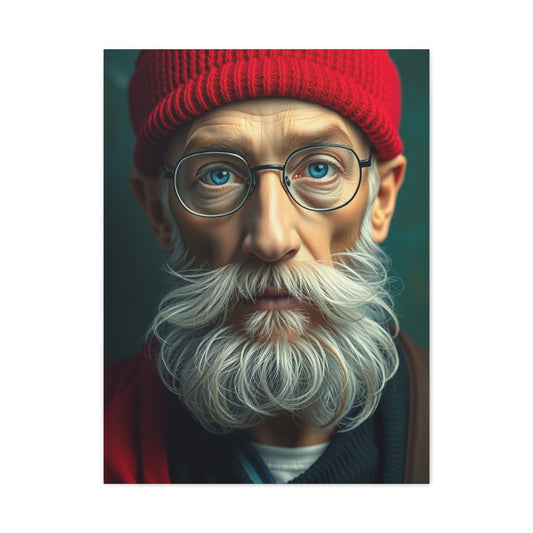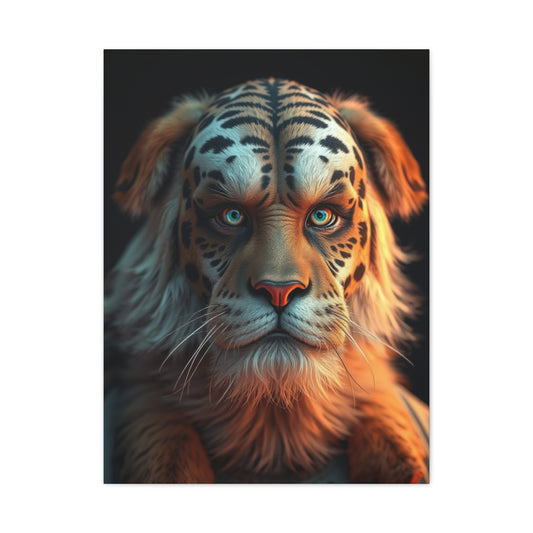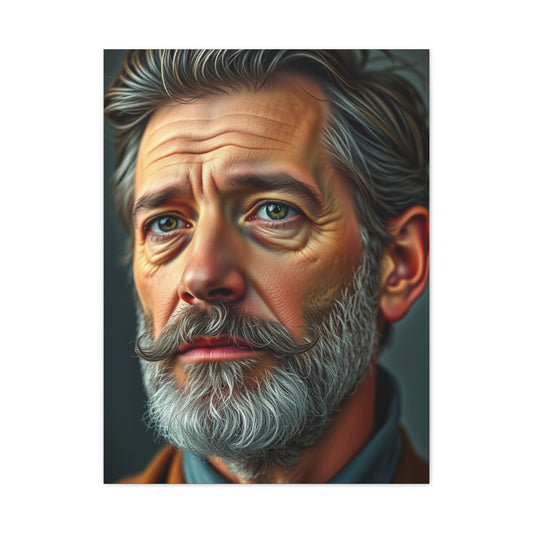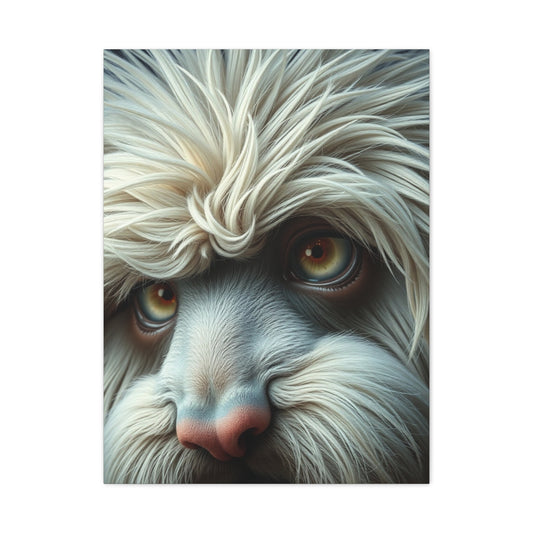Dreamlike Humor in Michael Sowa's Wall Art
The first encounter with an artist can sometimes be more memorable than the artwork itself. In 1997, while traveling through Austria, one simple stop at a museum gift shop turned into an unforgettable artistic discovery. The title translated roughly to “The Easter Bunny is Coming,” yet the atmosphere of the image suggested something far more profound than a cheerful seasonal greeting. It carried a curious weight, with a rabbit that appeared both whimsical and unsettling, existing in a space suspended between dream and reality.
That postcard, carefully chosen for its charm and for a personal fondness for rabbits, eventually found its place in a family home, where it still resides. Its enduring presence is not only a reminder of that journey but also of the way art can unexpectedly embed itself into memory, attaching meaning to a moment long after it has passed. At that time, the name Michael Sowa held little recognition, yet the image refused to fade, lingering quietly and growing in resonance as the years unfolded. What began as a casual purchase evolved into the seed of fascination, leading to the discovery of an entire world of fantastical creativity woven by the artist’s hand.
The Atmosphere of Sowa’s Imagery
Michael Sowa has an uncanny ability to take the ordinary and tilt it just enough to make viewers pause. In Der Osterhase Kommt, the rabbit is not a bright, friendly caricature but a creature emerging from an atmosphere that is moody, dark, and strange. Sowa thrives in this delicate tension between innocence and peculiarity, where the charming becomes uncanny and the humorous borders on unsettling. His works are often quiet, painted with muted palettes that suggest tranquility, but within them lies an absurdity that is impossible to ignore.
This balance makes his wall art stand apart. Unlike many artists who lean heavily toward either fantasy or realism, Sowa weaves both together seamlessly. A painting may feature a pig lounging in a domestic living room, a flock of geese dressed as party guests, or a surreal landscape populated by creatures out of place. Each image carries its own narrative, inviting the viewer to invent a story or reflect on the hidden satire.
Early Fascination with Animals and the Surreal
Animals have always been central to Sowa’s work. Rather than depicting them in their natural habitats, he thrusts them into human environments, often giving them exaggerated personalities. This is not merely a whimsical choice but part of a broader exploration of the absurdity of everyday life. By showing a bear sitting politely at a dinner table or a rabbit appearing in an ominous field, he creates a juxtaposition that highlights the strangeness of human rituals.
In Der Osterhase Kommt, the rabbit is more than a symbol of Easter tradition. It represents a crossover between folklore and the surreal. Its posture, expression, and environment give it a presence that feels both mythological and satirical. Sowa’s animals rarely remain passive subjects. Instead, they become characters that reflect human idiosyncrasies, fears, and humor.
The Path Toward Recognition
While Der Osterhase Kommt may have been a first encounter for one traveler in a German museum, the larger art world came to recognize Sowa through various stages. Born in Berlin in 1945, he studied at the Berlin State School of Fine Arts, where his distinct style began to take shape. Initially, his paintings reached audiences through books, posters, and postcards, allowing ordinary people to engage with his surreal vision without stepping into galleries. This accessibility helped spread his reputation across Europe.
His wider breakthrough came when his paintings appeared in the film Amélie in 2001. Jean-Pierre Jeunet’s cinematic masterpiece about whimsy, love, and serendipity found a perfect visual complement in Sowa’s art. The film featured several of his works, using them not merely as decoration but as part of the protagonist’s interior world. For many viewers worldwide, this was their introduction to his peculiar animals and dreamlike settings. Suddenly, postcards and small prints were not the only places where his work thrived; his style became recognizable to a global audience.
Why His Wall Art Resonates
Michael Sowa’s wall art holds a particular power because it does not dictate meaning. Unlike some modern art that thrives on abstraction or heavy symbolism, his paintings remain deceptively simple. A goose in boots, a dog with melancholy eyes, or a rabbit in a gloomy setting—these are all straightforward images on the surface. Yet their strangeness lingers, making them impossible to forget. The humor is subtle, the surrealism is gentle, and the storytelling is left unfinished, allowing viewers to complete it in their own minds.
This openness makes his works timeless additions to any interior. When framed and displayed, they become conversation starters, pulling people into discussions about their possible meanings. The emotional range they cover—from absurd laughter to quiet melancholy—mirrors the complexities of life itself.
Techniques and Methods
Michael Sowa’s artistic universe is shaped by a distinct combination of traditional craftsmanship and whimsical experimentation. His wall art demonstrates not only an imaginative vision but also a careful adherence to painterly techniques that make his work instantly recognizable. While many surrealist artists lean heavily on abstraction, Sowa retains a disciplined commitment to representational forms. His rabbits, dogs, pigs, or ducks are rendered with almost photographic clarity, yet their placement in unlikely environments disrupts the expectations of realism. This calculated tension is central to his creative method.
One of his hallmarks is the use of subdued and muted palettes. Earth tones, soft greens, deep browns, and dusky grays dominate the canvas, creating an atmosphere that feels timeless and quietly unsettling. Bright colors are rarely the focus; instead, he employs subtle variations in tone to bring depth and mood. The darkness is not oppressive but rather theatrical, a backdrop against which absurdity stands out. A rabbit stepping through a shadowy field or a goose perched in a domestic interior becomes far more striking when emerging from a somber landscape.
Sowa’s brushwork carries both precision and softness. He often builds layers slowly, giving surfaces a velvety finish. Animals appear tactile, as if their fur or feathers could be touched, while backgrounds are intentionally hazy, reminiscent of dreamscapes. This balance keeps the subject grounded while allowing the environment to drift into ambiguity. He favors oil paints for their ability to build richness in tone, but he also uses gouache and watercolor for lighter works, particularly when creating illustrations for books or smaller prints.
Composition plays an equally important role in his method. He often centers his animals as protagonists, giving them the kind of gravity usually reserved for human subjects in classical portraiture. Their expressions, postures, and gazes are never casual; they carry weight, as though they are aware of an unseen narrative unfolding beyond the canvas. At the same time, he avoids overcrowding his paintings. Space is used deliberately, letting silence and strangeness resonate around the figures. This simplicity is deceptive, requiring a keen sense of balance and proportion.
His use of humor is another essential technique. While humor might not seem like a method in the traditional artistic sense, Sowa integrates it structurally into his works. The humor arises not only from the subject matter but from timing, placement, and atmosphere. A pig in a bathtub is funny not because the image is absurd alone but because it is painted with such quiet seriousness, as though it were the most ordinary thing in the world. This straight-faced delivery, achieved through meticulous technique, amplifies the comedic effect.
Challenges and Common Mistakes
For artists inspired by Michael Sowa’s wall art, imitation often proves more difficult than expected. His style seems accessible at first glance, with familiar animals and straightforward compositions, yet beneath the surface lies a complex interplay of tone, narrative, and subtle irony. One common mistake made by emerging painters is overemphasizing the absurdity while neglecting atmosphere. Without the carefully constructed moody environment, the humor risks becoming cartoonish rather than surreal. The darkness and restraint in his palette are integral to achieving the right balance.
Another frequent challenge is capturing expression. Sowa’s animals are not anthropomorphic in the exaggerated sense, but their gazes are deeply humanized. They do not grin or scowl but rather convey complex states—melancholy, resignation, curiosity, or quiet amusement. Reproducing this requires not just technical skill in rendering eyes and posture but also an intuitive sense of emotional understatement. Many attempts at recreating his work falter by making animals too expressive or too blank, thereby losing the delicate ambiguity that defines his style.
A further mistake involves misunderstanding scale and space. Sowa often manipulates scale subtly to unsettle viewers. An animal may appear slightly too large for its environment or perfectly at ease in a space that should feel absurd. If imitated without nuance, this technique can feel clumsy, turning the image into parody rather than art. His challenge lies in executing these spatial oddities so naturally that the viewer accepts them without immediate resistance.
Even for seasoned artists, sustaining consistency within such a whimsical approach can be daunting. It is easy to fall into repetition, producing similar scenes without the freshness that Sowa maintains. His work thrives on originality, each piece hinting at a different narrative universe. Without inventive variation, imitations become predictable and lose their magnetic pull. This is why his paintings remain enduring, while many imitative works fade quickly from memory.
The final and perhaps greatest challenge lies in avoiding superficiality. At first glance, Sowa’s paintings may appear whimsical for whimsy’s sake, but closer study reveals a layered commentary on human behavior, cultural rituals, and existential strangeness. Those who fail to perceive this depth often recreate only the surface humor, stripping away the reflective undertones that make his work both humorous and haunting.
Trends and Future Outlook
The influence of Michael Sowa’s wall art has extended far beyond his native Germany. His surreal yet humorous sensibility has resonated with audiences globally, particularly in the realm of interior design and contemporary illustration. In recent years, there has been a resurgence of interest in wall art that blends irony with warmth, and Sowa’s legacy continues to shape that demand. Consumers seek artwork that is conversational, capable of drawing both laughter and thought, and his works set the standard for such hybrid expression.
One noticeable trend is the incorporation of whimsical surrealism into everyday decor. Prints of animals in unusual contexts have become popular in cafes, boutique hotels, and personal living spaces. While many of these works are not directly by Sowa, their inspiration is unmistakable. The desire for art that blurs the line between fantasy and reality reflects a cultural shift toward embracing strangeness and individuality in home environments.
In publishing, his influence is equally strong. Illustrated books for adults that feature strange and playful imagery have multiplied, proving that the appetite for visual storytelling beyond childhood has grown significantly. Sowa’s early forays into book illustration have paved the way for contemporary artists to blend fine art with literary imagination.
Looking forward, the digital age is likely to extend his influence further. While his original method is rooted in traditional painting, contemporary digital artists are adapting his sensibilities into new mediums. Animated shorts, interactive illustrations, and augmented reality wall art installations can easily borrow from his balance of humor and melancholy. The challenge will be preserving the subtleness of his atmosphere in formats that often prioritize speed and brightness. Yet, as long as there is a demand for art that captures the absurd beauty of the ordinary, his vision will remain relevant.
Another important aspect of the future lies in sustainability. With increasing attention to ecological themes, artworks featuring animals inevitably carry additional layers of meaning. Sowa’s animals, while not overtly environmental in message, can be reinterpreted as reflections on human-animal relationships and the strangeness of our coexistence. Future audiences may see his works not only as whimsical narratives but also as quiet commentaries on the Anthropocene, where animals take on roles that highlight human absurdity.
Expert Insights
Critics and art historians often describe Michael Sowa’s contributions as a unique continuation of European surrealism tempered with satire. Unlike the radical surrealists of the early twentieth century, who relied heavily on shock value and dream dissonance, Sowa chooses subtlety. His works feel accessible, even comforting, while still unsettling the viewer enough to provoke thought. Experts emphasize that this balance is extraordinarily difficult to achieve.
Some note his kinship with artists like René Magritte, who also played with ordinary objects placed in extraordinary contexts. Yet where Magritte’s works often felt cerebral and intellectual, Sowa’s art radiates warmth, rooted in the everyday charm of animals and domestic scenes. This accessibility explains his wide popularity and the fact that his works adorn not only gallery walls but also living rooms around the world.
Film scholars have also weighed in, particularly regarding his presence in Amélie. They argue that his paintings were not incidental decorations but thematic extensions of the film’s exploration of whimsy, melancholy, and the search for connection. The quiet absurdity of his wall art mirrored the protagonist’s own way of perceiving the world, where ordinary gestures carried extraordinary emotional weight. This cinematic validation amplified his international reputation, transforming him from a European cult figure into a globally recognized artist.
Contemporary illustrators frequently cite him as an influence, especially those working at the intersection of humor and fine art. They point to his use of muted palettes, ambiguous expressions, and dreamlike environments as lessons in restraint. In interviews, some admit that the most challenging part of learning from Sowa is not technique but tone. Mastering his equilibrium between comedy and melancholy requires more than skill; it demands sensitivity to nuance.
Ultimately, experts agree that his contribution lies not just in individual works but in the creation of a unique artistic language. It is a language where animals become mirrors of humanity, where humor masks depth, and where the surreal becomes quietly familiar. His wall art continues to teach artists, critics, and casual viewers alike that imagination flourishes best when tempered with sincerity.
Emerging Trends in Wall Art
Wall art has always mirrored the cultural pulse of societies, acting as both reflection and provocation. In recent years, the landscape of wall art has undergone a striking transformation. No longer limited to framed canvases or traditional murals, it has expanded into multi-sensory and interactive forms that blur the line between artistry and lifestyle. One of the most significant trends is the rise of immersive wall art experiences, where viewers are not just spectators but participants. Spaces that utilize projection mapping, augmented reality layers, and tactile materials now allow individuals to feel as though they are stepping inside a painting rather than simply looking at one.
Another growing trend is the resurgence of hand-crafted authenticity. While digital prints dominate the marketplace for their accessibility, there is an increasing desire for works that show the trace of human touch. Textured canvases, brushstrokes left intentionally rough, and natural materials like wood, clay, or bark are reclaiming importance. Collectors and homeowners alike are searching for originality, where imperfections become part of the art’s story rather than flaws to be corrected.
Minimalist and maximalist approaches also continue to evolve. Minimalist wall art emphasizes negative space, subdued tones, and meditative calm, while maximalist aesthetics thrive on layered imagery, saturated colors, and storytelling density. Both styles reflect larger cultural rhythms—minimalism often aligning with a search for tranquility in chaotic times, and maximalism reflecting a craving for abundance, diversity, and bold expression.
Sustainability has also become inseparable from contemporary trends. Artists are using recycled materials, organic pigments, and reclaimed surfaces to address ecological concerns. Wall art is no longer only decorative but an ethical statement, embodying the values of those who commission and collect it. Whether in urban murals that champion environmental justice or in small-scale artworks that highlight natural textures, sustainability has become a quiet yet powerful undercurrent.
Digital marketplaces and social platforms have further redefined how wall art circulates. A single piece posted online can reach millions, giving independent artists unprecedented exposure. This democratization of distribution means that emerging voices, once confined to local exhibitions, now shape global aesthetics. Trends move more fluidly across cultures, with motifs from one region blending with those of another in ever-evolving hybrids.
Step-by-Step Guides
For those who wish not only to admire wall art but also to create or curate it, a clear step-by-step process can transform the overwhelming into the achievable. While creativity resists rigid formulas, guidance can provide a structure that encourages experimentation.
Step One: Choosing a Concept
Every piece of wall art begins with a seed of inspiration. This may come from personal memories, cultural traditions, or abstract emotions. Before materials are gathered, it is important to define the intent. Is the artwork meant to soothe, provoke, entertain, or commemorate? Establishing the emotional compass at the outset helps prevent the work from becoming directionless. Artists often sketch or journal ideas, allowing disparate fragments of imagination to coalesce into a guiding theme.
Step Two: Selecting Materials and Medium
The choice of medium influences both process and outcome. Oil paints offer depth and layering possibilities, while acrylics provide vibrancy and faster drying times. Watercolors yield translucency, while mixed media—combining paint, collage, and found objects—invites texture and dimension. Increasingly, sustainable materials are favored, such as reclaimed wood panels or plant-based pigments. For those creating wall art intended for outdoor display, durability must be considered, with weather-resistant paints and protective coatings ensuring longevity.
Step Three: Preparing the Space
Whether creating art for a canvas to be hung or directly painting onto a wall, preparation is critical. Walls should be primed, cleaned, and smoothed to create an even foundation. Lighting should also be evaluated, since the placement of natural and artificial light profoundly affects how colors and textures will be perceived. For those curating rather than creating, preparing the space involves choosing a location where the artwork can breathe, free from visual clutter that might dilute its impact.
Step Four: Executing the Design
The execution phase is where imagination translates into tangible form. For muralists, this may involve transferring sketches onto the wall using grids or projection methods. For canvas-based works, the artist might build layers gradually, ensuring harmony of tone and composition. It is essential to embrace both precision and spontaneity—leaving room for accidental discoveries while adhering to the guiding concept. Many of the most compelling works emerge from mistakes embraced rather than erased.
Step Five: Integrating Texture and Detail
Wall art often comes alive through its details. Texture can be introduced through heavy brushstrokes, collage materials, or sculptural elements attached to the surface. Details should not overwhelm the larger composition but should invite close inspection. A viewer standing across the room may perceive the overall mood, while one stepping closer discovers subtle intricacies—a duality that gives wall art depth and endurance.
Step Six: Preserving and Displaying
Once the artwork is complete, attention shifts to preservation. Varnishes, sealants, and framing choices all influence how the piece will age. For murals, protective coatings safeguard against weathering, while for indoor pieces, ultraviolet-resistant glass can shield against fading. Displaying the work requires sensitivity to the environment—art should never be an afterthought but a central dialogue within the space. Correct placement, lighting, and spacing transform a finished painting into a living presence within a room.
Step Seven: Engaging the Audience
Wall art achieves its full potential only when it resonates with others. This final step is less about technique and more about sharing. Whether through exhibitions, social platforms, or intimate gatherings at home, presenting the artwork invites dialogue and interpretation. An artist may have one intention, but the viewers’ diverse perspectives give the work new layers of meaning. This reciprocity between creator and audience ensures that wall art continues to evolve long after the last brushstroke has dried.
Cultural Significance of Wall Art
Wall art is never merely decoration. Across centuries and continents, it has functioned as a mirror of society, a channel for dissent, and a vehicle for storytelling. From prehistoric cave paintings that documented hunts and myths to grand frescoes adorning cathedrals, walls have always borne humanity’s need to externalize memory and imagination. The cultural weight of wall art lies in its public accessibility. Unlike small canvases locked in private collections, a wall speaks outward, confronting anyone who passes by. In homes, it transforms interior walls into canvases of identity, while in urban spaces, it can challenge authority or celebrate community pride.
Michael Sowa’s surreal works, for example, embody the playful absurdities of modern life, embedding humor into cultural critique. His animals and uncanny compositions resonate precisely because they reflect society’s quirks in ways both subtle and charming. More broadly, wall art today carries layers of meaning shaped by migration, technology, and ecology. In globalized societies, motifs travel freely, leading to hybrid aesthetics where indigenous patterns may sit alongside futuristic abstractions. This fusion makes contemporary wall art a kind of cultural palimpsest, inscribed with voices past and present.
Psychological Impact of Wall Art
The walls surrounding us influence mood and behavior more than is often acknowledged. A room with blank white walls can feel sterile or monotonous, whereas walls enriched with art generate warmth, curiosity, and a sense of belonging. Psychologists have long studied the connection between visual stimuli and emotional well-being, finding that images embedded with narrative or symbolism activate deeper engagement than purely decorative motifs.
When a whimsical rabbit stares back from a shadowy field or a dreamlike cityscape unfolds across a mural, the mind lingers. Wall art creates moments of pause, quiet interludes amid daily routines. In hospitals and wellness centers, carefully chosen art reduces anxiety and promotes healing. In offices, vibrant murals encourage creativity and collaborative energy. Even in domestic interiors, the selection of wall art shapes atmosphere—whether through calming landscapes, provocative surrealism, or intimate portraits.
Sowa’s work illustrates this psychological dynamic well. His paintings amuse at first glance but soon provoke reflection. The humor is gentle, yet behind it lies a kind of existential questioning. This duality allows viewers to oscillate between laughter and contemplation, an experience that stimulates both emotion and intellect.
Wall Art in Domestic Spaces
In private homes, wall art has become an extension of personal narrative. No longer confined to formal living rooms, it now permeates kitchens, bedrooms, hallways, and even bathrooms. Each placement reflects intention. In entryways, bold murals or striking prints establish an immediate impression. In living areas, larger works anchor conversations. Bedrooms often host quieter, more introspective pieces that nurture restfulness.
A trend within domestic design is the integration of wall art into architectural elements. Rather than being an addition, it becomes inseparable from the structure—murals painted directly onto plaster, textured reliefs embedded into walls, or digital panels that cycle through evolving imagery. This integration transforms art into architecture, dissolving the boundary between embellishment and foundation.
Sowa’s prints, often sold as posters or postcards, frequently find their way into homes not as ostentatious statements but as cherished companions. Their modest scale makes them adaptable to various spaces, while their surreal humor ensures they spark interest without overwhelming the environment. In this sense, his work exemplifies how wall art can blend intimacy with universality.
Wall Art in Public Realms
Beyond the home, wall art has a powerful role in shaping communal identity. Urban murals reclaim neglected spaces, turning abandoned facades into living narratives. Graffiti, once dismissed as vandalism, is increasingly recognized as an essential strand of contemporary expression. Cities now commission artists to create large-scale works that speak to local history, political struggles, or cultural aspirations.
Public wall art also responds to the rhythms of protest and celebration. In moments of upheaval, walls become canvases of urgency, bearing slogans and imagery that articulate collective emotions. These works may be temporary, painted over within weeks, yet their impact resonates long after. Festivals often commission temporary murals, transforming cityscapes into vibrant stages of artistic dialogue.
The popularity of street art festivals demonstrates society’s hunger for public creativity. Audiences are no longer content with passively visiting museums; they crave art that meets them in everyday life. In this sense, wall art democratizes creativity, ensuring it belongs not just to elites but to entire communities.
Technological Transformations
The rise of digital technology has profoundly altered how wall art is conceived, produced, and experienced. In the past, walls were surfaces for pigment, plaster, and mosaic, but today they can become interactive canvases that merge the material with the virtual. Digital projection mapping allows ephemeral murals to shift continuously, blending color and motion in ways traditional painting cannot replicate. Buildings can be transformed into living stories, with imagery dancing across facades in synchrony with music or narrative. Such works have begun to redefine the idea of permanence, suggesting that wall art can exist as a constantly evolving performance rather than a fixed composition.
Augmented reality applications have added yet another layer to the medium. By scanning a mural or print with a phone, viewers can unlock hidden dimensions—animated figures emerging from static images, contextual explanations hovering beside motifs, or alternate color schemes layered invisibly until revealed. This interplay between seen and unseen creates a dialogue between tradition and innovation, where the tactile wall becomes a portal into deeper imaginative realms. These innovations do not displace classical painting but rather expand the horizon of what wall art can achieve, offering hybrid experiences where permanence and flux coexist.
Virtual reality has also entered the conversation, allowing artists to design entire immersive environments that mimic the sensation of walking within a painted world. Though these works may not exist physically on a wall, they influence how people think about spatial art, broadening expectations for what wall art can encompass. Such explorations point to a future where digital murals may change with the seasons, the time of day, or even the mood of the viewer, creating environments that are alive, responsive, and participatory.
Another dimension of technological transformation is customization. Online platforms now give buyers the ability to personalize wall art with remarkable ease, choosing not only colors and motifs but sometimes inserting their own photographs or family images into surreal compositions. This democratization blurs the traditional divide between creator and consumer, challenging hierarchies of authorship. It empowers individuals to feel like collaborators in the artistic process, yet it also forces artists to navigate the delicate boundary between originality and mass reproducibility. While some see this as a dilution of artistic integrity, others view it as a continuation of the long tradition of prints and multiples, simply accelerated by digital tools.
Despite these radical shifts, the essence of wall art remains tied to its physical presence. Even in an age of virtual galleries and high-definition screens, nothing can replicate the visceral experience of standing before a wall transformed into an image. The sheer scale, the tactile textures, the play of light across brushstrokes or relief—these qualities cannot be fully digitized. Technology may extend, enhance, and reinterpret, but the primal encounter of body, wall, and image retains its irreplaceable power. The future of wall art, therefore, is not a replacement of the old by the new but a complex layering where ancient impulses and futuristic tools merge.
The Role of Collectors and Curators
Collectors have always played an indispensable role in sustaining the tradition of wall art. Their decisions about which artists to support, which pieces to acquire, and which movements to champion determine much of what enters the cultural mainstream. Their patronage shapes not only the financial viability of artists but also the narratives that museums, galleries, and archives preserve for future generations. In the contemporary moment, the profile of collectors has broadened significantly. No longer limited to wealthy elites or institutional buyers, collectors now include younger audiences who seek affordable prints, limited editions, and sustainable works. This diversification has injected new energy into the market, enabling artists to reach varied communities across social and economic boundaries.
Such expansion has allowed artists like Michael Sowa to thrive in both high art and accessible markets. A single painting might exist simultaneously as an original canvas, a licensed print for homes, and even a small postcard circulating globally. Each format carries the essence of the work while reaching different strata of society. The boundary between the serious collector and the casual admirer thus grows increasingly porous, reflecting a cultural shift where art is not only for the few but for the many. This accessibility strengthens the bond between artists and audiences, ensuring that wall art becomes woven into everyday life rather than reserved solely for elite institutions.
Curators, meanwhile, play a parallel role in framing how wall art is experienced. Their choices determine whether works are presented as isolated objects, components of thematic narratives, or part of larger cross-disciplinary experiments. Increasingly, curators embrace collaborations that pair wall art with other media such as music, performance, or digital interaction. These layered exhibitions heighten the sensory richness of the encounter, ensuring that wall art is not reduced to a static background but becomes a central player in immersive experiences. For instance, a mural may be exhibited alongside live soundscapes or interactive lighting, altering how the piece is perceived from moment to moment.
Another shift in curatorial practice is the embrace of outdoor and community-based exhibitions. Walls within urban environments are curated much like galleries, with artists commissioned to create pieces that engage with the local history, geography, and identity. These projects not only beautify neglected spaces but also foster civic pride and dialogue. In this way, curators extend their role beyond the gallery, bringing art to streets where it can be encountered by diverse publics who might never set foot inside a museum.
Yet, the role of collectors and curators is not without challenges. Both must navigate the ethical complexities of authenticity, commodification, and cultural representation. Collectors must decide how their acquisitions shape legacies, while curators must balance the preservation of tradition with the embrace of innovation. The synergy between these figures ensures that wall art remains a living practice rather than a static relic. Their combined influence makes it possible for whimsical artists, surreal storytellers, and avant-garde experimenters alike to thrive within the ever-expanding ecosystem of contemporary creativity.
Conclusion
Wall art is not a peripheral embellishment but a central dialogue between humanity and space. From the chance discovery of a postcard in a German museum gift shop to the global recognition of surreal works in cinema and interior design, the journey of artists like Michael Sowa demonstrates how walls become canvases for humor, reflection, and cultural identity.
The enduring power of wall art lies in its ability to operate simultaneously on multiple levels. It decorates while it provokes, it entertains while it questions, it comforts while it unsettles. Emerging trends reveal that art will continue to evolve, embracing technology, sustainability, and interactivity, yet its essence remains tied to the ancient impulse to mark walls with meaning.
As walls continue to frame our lives—whether in domestic interiors, bustling cities, or digital spaces—art upon them will remain both witness and participant. The surreal animals of Sowa, the vast murals of urban collectives, the intimate prints in quiet homes—all are fragments of a larger conversation. This conversation is timeless, reminding us that walls are not barriers but stages upon which imagination endlessly unfolds.

